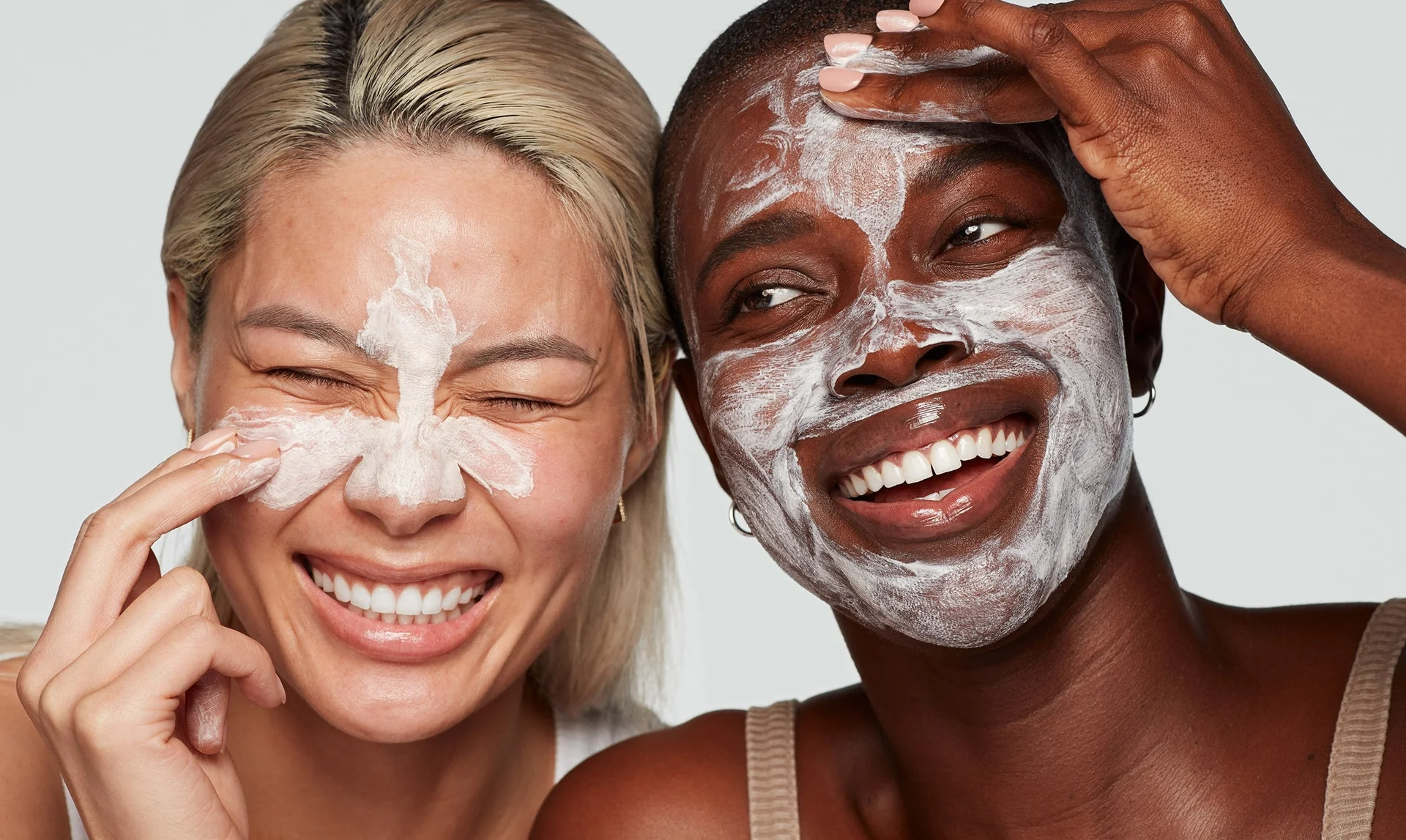In today’s rapidly evolving skin-care landscape, understanding how to effectively care for your skin is essential for achieving optimal health and appearance. This article will guide you through the crucial steps of identifying potential skin irritants, layering products correctly, and building a personalized routine tailored to your unique needs. By addressing common challenges and offering practical solutions, you can enhance your skin-care regimen and make informed decisions that promote a healthier complexion. Let’s explore how to refine your approach to skin care for better results.
In this article you will find:
Understanding Ingredient Interactions
In the intricate world of skin care, the interactions between various ingredients can significantly influence the health and appearance of your skin. Understanding these interactions is crucial for building an effective skin-care routine that not only enhances your skin’s natural beauty but also minimizes the risk of irritation and adverse reactions.
The Science Behind Ingredient Interactions
Every ingredient in a skin-care product serves a specific purpose, from moisturizing and exfoliating to providing antioxidant protection. However, when certain ingredients are combined, they can react in ways that may diminish their effectiveness or even cause harm. For instance, mixing retinol, a powerful anti-aging ingredient, with vitamin C can destabilize the vitamin, rendering it ineffective and potentially irritating the skin.
Understanding the pH levels of different ingredients is also essential. Some ingredients work best in acidic environments, while others thrive in alkaline conditions. For example, alpha hydroxy acids (AHAs) function optimally at a lower pH, whereas beta hydroxy acids (BHAs) can be more effective at a higher pH. Mixing products with conflicting pH levels can lead to reduced efficacy and skin irritation.
Common Ingredient Conflicts to Avoid
Being aware of common ingredient conflicts can help you avoid potential skin issues. Here are some combinations to steer clear of:
- Retinol and AHAs/BHAs: These ingredients can increase skin sensitivity when used together, leading to irritation.
- Vitamin C and Niacinamide: While some studies suggest they can be used together, others indicate that they may neutralize each other’s benefits.
- Salicylic Acid and Benzoyl Peroxide: These acne-fighting ingredients can be overly drying when used in tandem.
By recognizing these conflicts, you can make informed decisions about the products you choose to incorporate into your skin-care routine.
How to Layer Ingredients Effectively
To maximize the benefits of your skin-care routine, it’s essential to layer products correctly. Here’s a simple guideline for layering:
- Start with a Cleanser: Use a gentle cleanser to prepare your skin.
- Apply Toner: If you use a toner, apply it next to balance your skin’s pH.
- Use Serums: Apply serums with active ingredients like retinol or vitamin C, allowing each layer to absorb before applying the next.
- Moisturizer: Seal in hydration with a suitable moisturizer.
- SPF: In the morning, finish with sunscreen to protect your skin from UV damage.
Using this order can help each product perform its best, enhancing your skin’s overall health.
Testing New Products
Before fully integrating a new product into your routine, it’s wise to conduct a patch test. Apply a small amount of the product to a discreet area of skin and monitor for any reactions over 24 hours. This precaution can help prevent widespread irritation and allow you to gauge how your skin responds to new ingredients.
For more in-depth guidance on ingredient interactions and the science of skin care, consider exploring resources like Healthline, which provides comprehensive insights into product layering and ingredient compatibility.
By understanding ingredient interactions, you can craft a personalized skin-care routine that not only nourishes your skin but also elevates your confidence. In the next section, we will delve into identifying potential skin irritants to further refine your regimen.
Identifying Potential Skin Irritants
When crafting a personalized skin-care routine, recognizing potential skin irritants is crucial for achieving a healthy, radiant complexion. Skin irritation can manifest in various forms, from redness and dryness to more severe reactions like rashes and breakouts. By being aware of common irritants and understanding how they affect your skin, you can make informed choices that promote skin health and comfort.
Common Skin Irritants to Watch For
Several ingredients are known to be potential irritants, and it’s essential to identify them to avoid adverse reactions. Here are some common culprits:
- Fragrances: Many products contain synthetic fragrances, which can cause allergic reactions and irritation, particularly for sensitive skin types.
- Alcohol: While some alcohols can be beneficial for skin, drying alcohols (like ethanol) can strip moisture and lead to irritation.
- Harsh Exfoliants: Physical scrubs with rough particles or strong chemical exfoliants can damage the skin barrier, resulting in redness and sensitivity.
- Preservatives: Certain preservatives, like parabens and formaldehyde-releasing agents, may cause allergic reactions in some individuals.
- Essential Oils: Though often marketed for their natural benefits, essential oils can be potent irritants for many people.
By familiarizing yourself with these ingredients, you can check labels carefully and make choices that suit your skin type.
Understanding Your Skin Type
Identifying your skin type is a fundamental step in recognizing what may irritate it. Different skin types react differently to various ingredients:
- Sensitive Skin: Often prone to redness and irritation, those with sensitive skin should avoid products with fragrances, alcohol, and harsh exfoliants.
- Oily Skin: This skin type may benefit from exfoliating ingredients like salicylic acid but should be cautious with heavy moisturizers that can clog pores.
- Dry Skin: Individuals with dry skin should look for hydrating ingredients like hyaluronic acid and avoid drying agents like alcohol.
- Combination Skin: This skin type may require a balanced approach, using lighter products for oily areas and richer formulations for dry patches.
By understanding your skin type, you can better predict how your skin will react to different ingredients.
Performing Patch Tests
Before incorporating new products into your routine, conducting a patch test can help identify potential irritants. Here’s how to perform a patch test effectively:
- Select a Small Area: Choose a discreet area of skin, such as behind the ear or on the inner arm.
- Apply the Product: Use a small amount of the product and apply it to the selected area.
- Monitor for Reactions: Observe the area for 24 to 48 hours. Look for any signs of redness, itching, or irritation.
If no adverse reactions occur, the product is likely safe for broader application. However, if irritation arises, it’s best to avoid using the product altogether.
Utilizing Resources for Ingredient Safety
For those looking to deepen their understanding of skin irritants and ingredient safety, resources like EWG’s Skin Deep provide valuable information on the safety and potential hazards of various cosmetic ingredients. This can empower you to make informed choices about the products you use.
By being vigilant about identifying potential skin irritants, you can significantly improve your skin-care routine, enhancing both its effectiveness and your skin’s overall health. In the next section, we will explore how to build a personalized skin-care routine that aligns with your unique needs and goals.
Building a Personalized Skin-Care Routine
Creating a personalized skin-care routine is essential for achieving and maintaining healthy, glowing skin. With the plethora of products available, it can be overwhelming to know where to start. A customized routine tailored to your unique skin type, concerns, and lifestyle will not only improve your skin’s appearance but also enhance your overall confidence.
Assessing Your Skin Type and Concerns
The first step in building an effective skin-care routine is to accurately assess your skin type and specific concerns. Here’s how you can do this:
- Determine Your Skin Type: Skin types generally fall into categories: oily, dry, combination, sensitive, or normal. Understanding your skin type will guide your product choices.
- Identify Specific Concerns: Take note of any issues you want to address, such as acne, hyperpigmentation, fine lines, or dryness. This will help you select targeted products.
Consider keeping a skin journal to track how your skin reacts to different products and environmental factors. This can help you refine your routine over time.
Essential Steps in Your Routine
A well-rounded skin-care routine typically consists of several key steps. Here’s a breakdown:
- Cleansing: Start with a gentle cleanser suited to your skin type. A good cleanser removes dirt, oil, and makeup without stripping your skin of its natural moisture.
- Toning: If you choose to use a toner, select one that balances your skin’s pH and prepares it for better absorption of subsequent products.
- Serums: Incorporate serums containing active ingredients that target your specific concerns. For example, use a vitamin C serum for brightening or a hyaluronic acid serum for hydration.
- Moisturizing: Regardless of your skin type, moisturizing is crucial. Choose a lightweight gel for oily skin or a richer cream for dry skin to maintain hydration.
- Sun Protection: In the morning, always finish with broad-spectrum sunscreen to protect your skin from harmful UV rays.
By following these essential steps, you can create a foundation for a successful skin-care routine.
Adjusting Your Routine with Seasons and Lifestyle
Your skin’s needs can change with the seasons, climate, and even your lifestyle. Here are some tips for adjusting your routine accordingly:
- Seasonal Changes: In winter, your skin may require heavier moisturizers to combat dryness, while summer may call for lighter, oil-free formulations.
- Lifestyle Factors: Consider your activities; if you’re often outdoors, prioritize sunscreen and antioxidant-rich products to combat environmental stressors.
- Stress and Hormonal Changes: Stress can trigger breakouts or sensitivity. Adjust your routine to include calming ingredients like chamomile or aloe vera during stressful times.
Being flexible and responsive to your skin’s needs will help maintain its health and radiance.
Investing in Quality Products
While it may be tempting to opt for lower-cost options, investing in quality skin-care products can yield better results. Look for:
- Ingredients: Choose products with scientifically backed ingredients that align with your skin’s needs. Research brands known for their commitment to quality and efficacy.
- Packaging: Products in opaque or air-tight packaging can help preserve the integrity of the ingredients, ensuring their effectiveness over time.
- Reviews and Recommendations: Consider reviews from other users and consult with dermatologists or estheticians for personalized recommendations.
Quality products often lead to more noticeable results, making your investment worthwhile.
Utilizing Resources for Guidance
For additional guidance on building a personalized skin-care routine, consider resources such as Healthline, which provides detailed insights on the correct order of application and ingredient benefits.
By taking the time to build a personalized skin-care routine that caters to your unique needs, you can foster healthier skin and boost your self-esteem. As you navigate your skin-care journey, remember that patience and consistency are key. In the next section, we will explore how to incorporate new trends into your routine for optimal skin health.
Incorporating New Trends for Optimal Skin Health
As the beauty and skin-care industry evolves, new trends continuously emerge, offering innovative ways to enhance skin health. Staying informed about these trends can help you optimize your skin-care routine, ensuring it remains effective and aligned with the latest research and consumer preferences. Here, we’ll explore some of the most exciting trends shaping the future of skin care and how to incorporate them into your regimen.
1. Clean and Sustainable Beauty
One of the most significant trends in recent years is the shift towards clean and sustainable beauty. Consumers are increasingly looking for products that are free from harmful chemicals and are produced ethically. This includes:
- Ingredient Transparency: Brands are now more transparent about their ingredient sourcing and formulation processes, allowing consumers to make informed choices.
- Sustainable Packaging: Eco-friendly packaging options, such as biodegradable materials and refillable containers, are gaining popularity.
To incorporate this trend, seek out brands that prioritize clean formulations and sustainability. Check product labels for certifications like Ecocert or Leaping Bunny, which indicate ethical practices.
2. Skin Microbiome Awareness
Recent research has highlighted the importance of the skin microbiome in maintaining skin health. The microbiome refers to the diverse community of microorganisms living on your skin, which plays a critical role in protecting against pathogens and maintaining skin barrier function. Key aspects include:
- Probiotics in Skin Care: Products containing probiotics can help support a healthy skin microbiome. Look for ingredients like Lactobacillus or Bifidobacterium.
- Prebiotics: These ingredients nourish the beneficial bacteria on your skin. Common prebiotic ingredients include inulin and fructooligosaccharides.
To leverage this trend, consider adding a probiotic serum or prebiotic moisturizer to your routine, especially if you experience issues like acne or eczema.
3. Multi-Functional Products
With busy lifestyles, the demand for multi-functional skin-care products has surged. These products offer several benefits in one formulation, simplifying your routine. Examples include:
- Moisturizers with SPF: Combining hydration with sun protection can save time and ensure you don’t skip essential steps.
- Serum-Infused Foundations: These provide coverage while also treating skin concerns such as hydration and anti-aging.
Incorporate multi-functional products into your routine to streamline your application process without compromising on effectiveness.
4. Customizable Skin Care
Personalization in skin care is on the rise, with many brands now offering customizable products tailored to individual skin needs. This trend allows you to:
- Mix and Match Ingredients: Some brands offer customizable serums where you can choose specific actives based on your skin concerns.
- Personalized Consultations: Many brands provide online assessments to recommend products based on your unique skin profile.
Explore brands that offer customization options to create a skin-care routine that is uniquely yours.
5. Technology-Driven Solutions
Advancements in technology have also influenced skin care, with tools and devices that enhance product efficacy and improve skin health. Notable innovations include:
- LED Light Therapy Devices: These devices use different wavelengths of light to target various skin concerns, from acne to signs of aging.
- At-Home Facial Tools: Tools like jade rollers and microcurrent devices can boost circulation and enhance product absorption.
Consider integrating these technology-driven solutions into your routine for an added layer of treatment and care.
Staying Informed and Adaptive
To successfully incorporate these trends into your skin-care routine, it’s essential to stay informed. Follow reputable beauty blogs, dermatologists, and skin-care influencers on social media to keep up with the latest developments. Additionally, consult resources like Healthline for comprehensive insights into skin-care trends and practices.
By embracing new trends, you can enhance your skin-care routine, ensuring it evolves with your skin’s needs and the ever-changing beauty landscape. Your journey to optimal skin health is ongoing, and being adaptable is key to achieving lasting results. Incorporating new trends into your skin-care routine can significantly enhance your skin health. Key trends include a focus on clean and sustainable beauty, which emphasizes ingredient transparency and eco-friendly packaging. Additionally, awareness of the skin microbiome is growing, with products containing probiotics and prebiotics gaining popularity for their role in maintaining skin health. Multi-functional products, customizable skin care, and technology-driven solutions like LED light therapy devices are also shaping modern routines.
To optimize your skin-care regimen, assess your skin type and specific concerns, and choose products that align with these needs. Stay informed about emerging trends by following reputable sources and consider integrating innovative products that streamline your routine while addressing your skin’s unique requirements.




